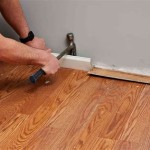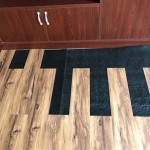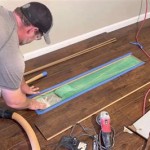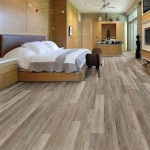Chestnut Wood Flooring Reviews: A Comprehensive Guide
Chestnut wood flooring has gained significant popularity in recent years, captivating homeowners with its unique beauty and durability. Characterized by its warm, reddish-brown hues and intricate grain patterns, chestnut flooring adds a touch of elegance and sophistication to any space. But before you commit to this captivating wood, it is crucial to understand its benefits and drawbacks, as well as the factors that contribute to its overall performance. This article provides a comprehensive guide to chestnut wood flooring reviews, highlighting key considerations to help you make an informed decision.
Durability and Hardness
Chestnut wood is known for its remarkable durability, surpassing many other hardwood species in terms of hardness. Its Janka hardness rating, which measures the resistance to indentation, falls between 900 and 1200 lbs. This high rating indicates that chestnut flooring can withstand heavy foot traffic, furniture placement, and even the occasional dropped object without significant damage. Its resistance to scratches and dents makes it ideal for high-traffic areas like kitchens, hallways, and living rooms.
However, while chestnut wood is robust, it can be susceptible to moisture damage. Its relatively porous nature means it can absorb water, potentially leading to warping or rotting if exposed to excessive moisture. Therefore, proper sealing and maintenance are crucial to ensure the longevity of your chestnut floor. Regular cleaning and the application of a high-quality sealant will help protect the wood from moisture and maintain its beauty.
Aesthetic Appeal and Color Variations
The aesthetic appeal of chestnut wood flooring is undeniable. Its warm, reddish-brown tones and intricate grain patterns create a visually captivating experience. The color variations within each plank add depth and character, enhancing the overall visual interest. Additionally, chestnut's natural color tends to deepen over time, giving the floor a rich, aged patina that reflects its history and character. This natural aging process adds to its beauty and charm.
However, the unique color variations of chestnut can also be a factor to consider when choosing flooring. While some homeowners appreciate the natural beauty of these variations, others prefer a more uniform appearance. It is vital to examine samples and consider your personal preferences to ensure that the color and grain patterns align with your desired aesthetic.
Cost and Availability
Chestnut wood flooring typically falls in the mid-range price category for hardwood flooring. While not the most expensive option, it can be pricier than other commonly used species like oak or maple. The availability of chestnut wood can also vary depending on your location, with certain regions having more accessible sources than others. Factors like the source of the wood, the grade, and the finishing process can also affect the final cost.
It is essential to research local suppliers and compare pricing across different manufacturers to find the best value for your investment. Consulting with experienced flooring specialists can also provide insights into the cost-effectiveness of chestnut wood flooring compared to alternative options.

Bellawood 1 2 In Select Brazilian Chestnut Engineered Hardwood Flooring 5 13 Wide Ll

5 X 3 4 Brazilian Chestnut Clear Grade Prefinished Solid Hurst Hardwoods

Bellawood 3 4 In Matte Brazilian Chestnut Solid Hardwood Flooring 25 Wide Ll

Triangulo 3 8 X 1 4 Engineered Brazilian Chestnut

Bellawood 3 4 In Matte Brazilian Chestnut Solid Hardwood Flooring 5 Wide Ll

Discount Triangulo 1 2 X 5 4 Brazilian Chestnut Hardwood Flooring Engsu514 By Hurst Hardwoods

Chestnut Sustainable Hardwood Flooring Greenhome Solutions

5 X 3 4 Prefinished Brazilian Chestnut Solid Hardwood Flooring Hardwoods4less Com

Hardwood Brazilian Chestnut Sucupira Natural Aa Floors Toronto

Hand Sc Chestnut Hickory Flooring Hardwood Bargains Www Hardwoodbargains Com Html
Related Posts








